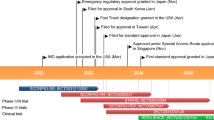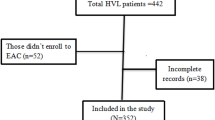Abstract
Background
Adherence is considered the key to the success of treatment with combination antiretroviral therapy (cART). In the past, people receiving cART needed to take several different pills each day (i.e., multi-tablet regimens; MTRs), with this complicated therapy often leading to mistakes, missed doses and sub-optimal treatment. Over the past two decades, advances in the study of AIDS have led to the simplification of treatment regimens, decreasing the number of tablets and daily administrations. Fixed-dose combinations (FDCs), in which two or more drugs are contained in a single dosage form, such as capsule or tablet, were introduced and, in 2006, the first single-tablet regimen (STR), consisting of a combination of three antiretroviral (ARV) drugs, became available.
Objective
Compare STR and MTR regimens (2, 3, and 5 tablets/day), in terms of adherence to ARV therapy, over a 5-year period.
Setting
Retrospective study undertaken at the Hospital Pharmacy of “Santo Spirito” Hospital of Pescara (Italy), as the unique point of distribution of ARV drugs for HIV patients.
Method
By means of PharmaDD.it database, developed by the authors, adherence was calculated as a ratio between received daily dose and prescribed daily dose.
Results
Excellent adherence over time for STRs, with an adherence value of 0.98 after 5 years of treatment.
Conclusion
Treatment with MTRs was associated with good levels of adherence over time, even though adherence rates were not always optimal with regard to HIV therapy.

Similar content being viewed by others
References
Faria NR, Rambaut A, Suchard MA, et al. HIV epidemiology: the early spread and epidemic ignition of HIV-1 in human populations. Science. 2014;346(6205):56–61.
Daar ES, Pilcher CD, Hecht FM. Clinical presentation and diagnosis of primary HIV-1 infection. Curr Opin HIV AIDS. 2008;3(1):10–5.
Palella FJ Jr, Delaney KM, Moorman AC, et al. Declining morbidity and mortality among patients with advanced human immunodeficiency virus infection. HIV Outpatient Study Investigators. N Engl J Med. 1998;338(13):853–60.
Fischl MA, Richman DD, Grieco MH, et al. The efficacy of azidothymidine (AZT) in the treatment of patients with AIDS and AIDS-related complex: a double-blind, placebo-controlled trial. N Engl J Med. 1987;317(4):185–91.
Meng TC, Fischl MA, Boota AM, et al. Combination therapy with zidovudine and dideoxycytidine in patients with advanced human immunodeficiency virus infection: a phase I/II study. Ann Intern Med. 1992;116(1):13–20.
Bartlett JA, Fath MJ, Demasi R, et al. An updated systematic overview of triple combination therapy in antiretroviral-naive HIV-infected adults. Aids. 2006;20(16):2051–64.
Carpenter CC, Fischl MA, Hammer SM, et al. Antiretroviral therapy for HIV infection in 1996: recommendations of an international panel. International AIDS Society-USA. JAMA. 1996;276(2):146–54.
Dejesus E, Young B, Morales-Ramirez JO, et al. Simplification of antiretroviral therapy to a single-tablet regimen consisting of efavirenz, emtricitabine, and tenofovir disoproxil fumarate versus unmodified antiretroviral therapy in virologically suppressed HIV-1-infected patients. J Acquir Immune Defic Syndr. 2009;51(2):163–74.
Nachega JB, Hsu AJ, Uthman OA, et al. Antiretroviral therapy adherence and drug-drug interactions in the aging HIV population. AIDS. 2012;26(Suppl 1):S39–53.
Paterson DL, Swindells S, Mohr J, et al. Adherence to protease inhibitor therapy and outcomes in patients with HIV infection. Ann Intern Med. 2000;133(1):21–30.
Dybul M, Fauci AS, Bartlett JG, et al. Guidelines for using antiretroviral agents among HIV-infected adults and adolescents. Ann Intern Med. 2002;137(5 Pt 2):381–433.
Bonora S, Nicastri E, Calcagno A, et al. Ultrasensitive assessment of residual HIV viraemia in HAART-treated patients with persistently undetectable plasma HIV-RNA: a cross-sectional evaluation. J Med Virol. 2009;81(3):400–5.
Boillat-Blanco N, Darling KE, Schoni-Affolter F, et al. Virological outcome and management of persistent low-level viraemia in HIV-1-infected patients: 11 years of the Swiss HIV Cohort Study. Antivir Ther. 2015;20(2):165–75.
Bangsberg DR, Haberer JE. Lifetime HIV antiretroviral therapy adherence intervention: timing is everything: comment on “Managed problem solving for antiretroviral therapy adherence”. JAMA Intern Med. 2013;173(4):306–7.
Nachega JB, Parienti JJ, Uthman OA, et al. Lower pill burden and once-daily antiretroviral treatment regimens for HIV infection: a meta-analysis of randomized controlled trials. Clin Infect Dis. 2014;58(9):1297–307.
Wong LP. Prevalence and factors associated with HIV/AIDS-related stigma and discriminatory attitudes: a cross-sectional nationwide study. Prev Med. 2013;57(Suppl):S60–3.
Monjok E, Smesny A, Essien EJ. HIV/AIDS-related stigma and discrimination in Nigeria: review of research studies and future directions for prevention strategies. Afr J Reprod Health. 2009;13(3):21–35.
Rao D, Kekwaletswe TC, Hosek S, et al. Stigma and social barriers to medication adherence with urban youth living with HIV. AIDS Care. 2007;19(1):28–33.
Zhou S, Martin K, Corbett A, et al. Total daily pill burden in HIV-infected patients in the southern United States. AIDS Patient Care STDS. 2014;28(6):311–7.
Krentz HB, Cosman I, Lee K, et al. Pill burden in HIV infection: 20 years of experience. Antivir Ther. 2012;17(5):833–40.
Bangsberg DR, Ragland K, Monk A, et al. A single tablet regimen is associated with higher adherence and viral suppression than multiple tablet regimens in HIV+ homeless and marginally housed people. AIDS. 2010;24(18):2835–40.
Santoleri F, Sorice P. Lasala R, et a;. Patient adherence and persistence with imatinib, nilotinib, dasatinib in clinical practice. PLoS ONE. 2013;8(2):e56813.
Santoleri F, Sorice P, Lasala R, et al. Medication adherence and persistence in the treatment of rheumatoid arthritis with adalimumab and etanercept: six years of analysis. J Med Econ. 2014;17(5):320–5.
WHO Collaborating Centre for Drug Statistics Methodology. Guidelines for ATC classification and DDD assignment 2016. WHO Collaborating Centre for Drug Statistics Methodology, Norwegian Institute of Public Health: Oslo, 2016.
Clarke KW, Gray D. The defined daily dose as a tool in pharmacoeconomics: advantages and limitations. Pharm Econ. 1995;7(4):280–3.
Santoleri F, Lasala R, Ranucci E, et al. Medication Adherence to tyrosine kinase inhibitors: 2-year analysis of medication adherence to imatinib treatment for chronic myeloid leukaemia and correlation with the depth of molecular response. Acta Haematol. 2016;136:45–51.
AIFA Determination-March 20, 2008 Guidelines for the Classification and Conduction of observational studies on drugs. http://www.agenziafarmaco.gov.it/allegati/det_20marzo2008.pdf. Accessed 30 June 2016.
Brummel A, Carlson AM. Comprehensive medication management and medication adherence for chronic conditions. J Manag Care Spec Pharm. 2016;22(1):56–62.
Author information
Authors and Affiliations
Corresponding author
Ethics declarations
Funding
No funding was provided for this work.
Conflict of interest
Fiorenzo Santoleri, Ruggero Lasala, Andrea Logreco, Alessandra Ammazzalorso, Marialuigia Fantacuzzi, Rosa Amoroso and Alberto Costantini declare that they have no conflict of interest.
Rights and permissions
About this article
Cite this article
Santoleri, F., Lasala, R., Logreco, A. et al. Time factor in antiretroviral adherence: analysis of adherence to single-tablet regimens versus multiple-tablet regimens over a 5-year period. Drugs Ther Perspect 34, 263–268 (2018). https://doi.org/10.1007/s40267-018-0491-5
Published:
Issue Date:
DOI: https://doi.org/10.1007/s40267-018-0491-5




